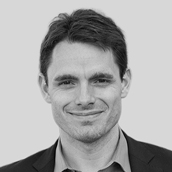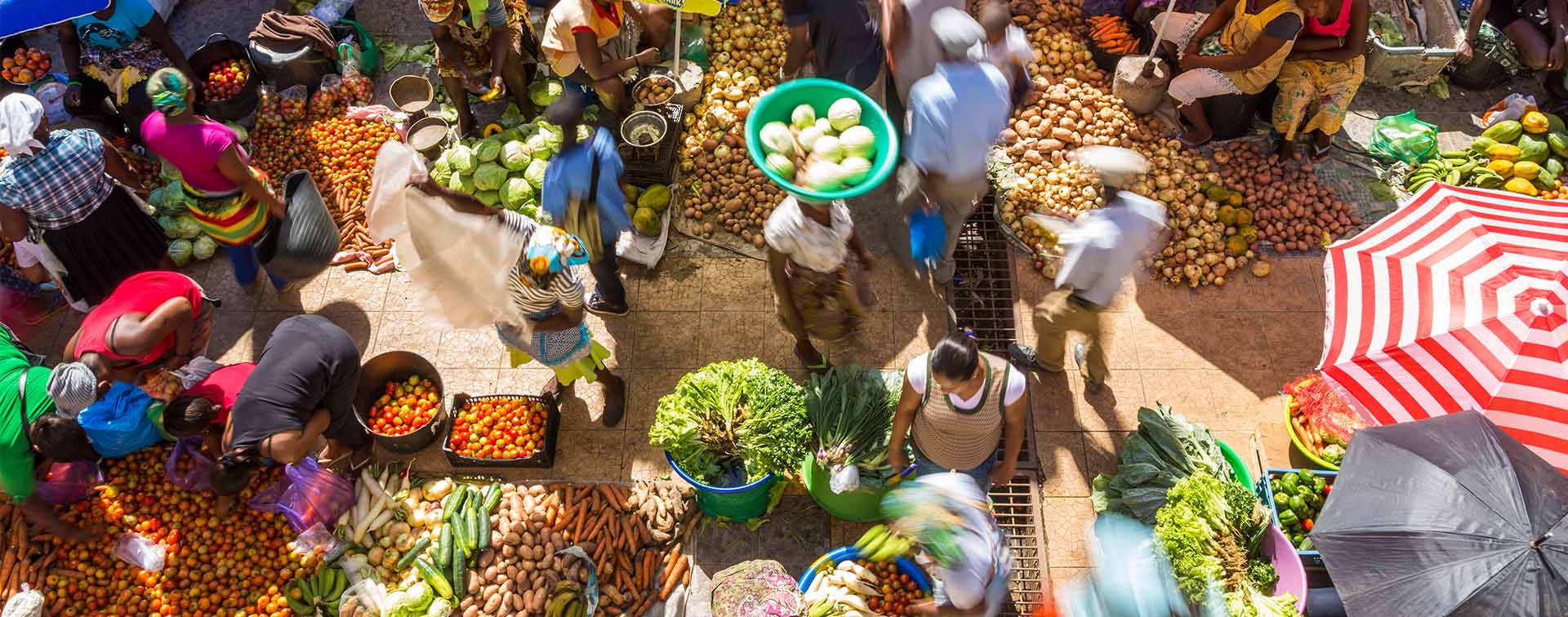
Michael Castle-Miller is a Partner at Albright Stonebridge Group (part of DGA Group), where he leads the Special Economic Zones Practice. He is also the founder of Refugee Cities, and a co-founder of the SDZ Alliance.
Urbanisation is one of the most significant global trends of our time. By 2050, nearly 70 per cent of the world’s population will reside in urban areas, up from 55 per cent today. This shift is not just about the increase in urban populations but also about the profound socio-economic changes it brings, particularly in developing regions of Asia and Africa.1
As cities expand rapidly, they often struggle to accommodate this growth in a planned and sustainable manner. This unplanned expansion frequently leads to the emergence of informal settlements — areas where people live without legal property rights or adequate access to services like sanitation, electricity, and clean water. These settlements are densely populated and typically lack the infrastructure necessary for healthy living, posing significant challenges not only to the residents but also to urban governance and environmental sustainability.
Consider Kibera in Nairobi, Kenya, one of Africa’s largest informal settlements, characterised by high population density with approximately 250,000 people crammed into just 2.5 square kilometers. Most of its residents live in makeshift structures with limited access to essential services; most houses lack access to clean water, sewage systems, and durable roads. The cramped conditions complicate daily living and exacerbate health and social issues, illustrating the urgent need for integrated urban planning solutions.2
The proliferation of informal settlements is closely linked to migration patterns within and between countries, driven by individuals and families seeking better opportunities or escaping adverse conditions such as conflicts or environmental disasters. Migrants often find themselves in cities whose housing infrastructure and building regulations are ill-equipped to respond to influx with new formal housing, forcing them to build their own housing informally.3 Informal settlements currently house approximately one billion people worldwide, a number that could double by 2030 if current growth trends continue according to the UN. Predictably, these settlements tend to emerge rapidly around major cities. Approximately one fourth of urban residents in developing countries live in informal settlements.4
Informal settlements embody a complex challenge that includes economic, social, and environmental dimensions. The informal economy in these areas, while providing crucial livelihoods, often operates outside formal legal frameworks, which limits access to financial services and perpetuates cycles of poverty and exclusion. This exclusion from the formal economy affects individuals’ economic mobility and reduces their opportunities for social integration and a better quality of life.5

The expansion of informal settlements alongside rapid Urbanisation underscores significant challenges that low-income individuals face in securing legal housing and operating legitimate businesses. These challenges are deeply entrenched in restrictive and complex regulatory environments that inhibit affordable housing availability and create formidable barriers to formal economic participation.
Acquiring legal land tenure presents substantial obstacles in many developing cities, where the process is fraught with bureaucratic hurdles and prohibitive costs, driving lower-income groups toward informal settlements, where they lack legal recognition, making them vulnerable to evictions and unable to leverage their land for financial stability.6
Legal and compliant housing often remains financially out of reach for low-income earners, creating a significant affordability gap. The market frequently fails to provide affordable options, pushing the necessity for informal settlements that, while providing housing, are inadequate and unstable.7
Navigating the regulatory landscape for business operations poses significant challenges, particularly for small and micro-enterprises predominant in low-income areas. These problems are often worse for migrants, especially refugees.8 The costs and complexities associated with formal registration and compliance are often deterrents, driving these businesses into the informal economy.9
Businesses operating informally struggle with access to capital and markets. Lacking formal recognition, they are ineligible for bank loans, government grants, and other forms of financial support that are critical for growth and sustainability. Additionally, their exclusion from formal market systems restricts their customer base and potential for expansion.10
The persistence of these barriers is often sustained by entrenched interest groups that benefit economically and politically from the status quo. For instance, land developers and large-scale landlords may resist policies that could make housing more affordable, fearing reduced market prices or increased competition. Similarly, established businesses might lobby against the simplification of business regulations, concerned about increased competition from newly formalised enterprises.11
Critically, informal settlements and economies play a necessary and beneficial role for both individuals and the broader society. They represent marginalised people’s innovative response to exclusionary restrictions that would otherwise bar them from societal and economic participation. They reduce barriers to affordable housing and economic opportunities, while fostering cohesive community ties, cultural vibrancy, inclusive economic development, and urban density.
Many conventional responses to informal settlements and economies — such as eviction, clearance, and relocation — obliterate these benefits and exacerbate problems. Such measures fail to address the root cause of the problem, which is not the informal activities themselves, but the restrictive regulations that deem these activities illegal. This situation calls for innovative solutions that focus less on altering the nature of informal settlements and businesses, and more on expanding the definition of ‘formal’ to include them.
IDZs are a proposed tool to address the myriad challenges associated with cities’ inability to integrate new residents into the formal sector. Conceptually, an IDZ is a designated area designed to legalise and facilitate the everyday economic and housing activities of low-income residents. The concept has been known by various names, such as refugee cities and sustainable development zones.12
An IDZ lowers barriers to living and working in the formal economy by operating under special regulations implemented by an independent regulatory authority. It adopts new, flexible land use and building regulations that legally recognise many previously illegal homes, making them eligible for property registration and title issuance.
Similarly, an IDZ restructures business registration and licensing procedures to legalise various businesses currently operating informally. The new regulations do not weaken environmental or social outcomes, rather they are designed to achieve these outcomes better and more efficiently. Effectively, an IDZ removes unnecessarily burdensome regulations impacting low-income residents, while doing a better job at protecting people’s rights, the environment, and public health and safety.13
An IDZ also delivers infrastructure and services designed to support home and business creation, such as roads, utilities, and public spaces to support economic and social activity. It also provides financial and technical support for entrepreneurs, one-stop shop services to streamline administrative processes, skills development programmes, and trained architects familiar with informal settlements available to assist residents as they build their homes.14
An IDZ is optimally located within or on the outskirts of burgeoning cities, addressing the pressures of Urbanisation and informality while maximising economic opportunities for residents. An IDZ could encompass existing informal settlements, undeveloped lands, or both. Furthermore, an IDZ could be very effective for a refugee camp, especially in a protracted refugee situation.15 In most cases, a national or local government needs to adopt or amend legislation allowing IDZs to operate under a distinct regulatory framework.16
Financial self-sufficiency is a cornerstone of the IDZ model, which aims to minimise reliance on external funding. After receiving an initial capital investment, it follows a ‘sites and services’ approach to development, keeping costs low while employing land value capture to generate revenue. This approach keeps an IDZ financially viable, either breaking even or generating a profit.17
The IDZ model is designed to harness and amplify economic, social, and environmental benefits within urban settings, particularly those challenged by informal settlements and unregulated economies. Together, these benefits create a robust framework for sustainable development that not only enhances the immediate area of the IDZ but also serves as a blueprint for other regions facing similar challenges. The comprehensive approach of the IDZ ensures that improvements in one sector contribute to benefits in others, leading to a holistic enhancement of the urban environment.
This is an extract from my chapter entitled ‘Inclusive Development Zones: A Model for Supporting the Spontaneous Order of Informal Economies’ in Free Global Cities: The Future Leaders in Migration and Public Governance (Bloomsbury Publishing, 2025), edited by Dr. Christian H. Kälin, which is available to purchase through bookstores worldwide, via Bloomsbury Publishing).
Special thanks to Joachim Rücker, chairperson of the SDZ Alliance, for his valuable review and input to this chapter.
References
1 United Nations, Department of Economic and Social Affairs, Population Division. (2018). World Urbanisation Prospects: The 2018 Revision.
2 A Desgroppes and S Taupin, ‘Kibera: The Biggest Slum in Africa?’ (2011) 44 The East African Review.
3 M Davis, Planet of Slums (Verso, 2006). versobooks.com/products/1959-planet-of-slums
4 United Nations, Department of Economic and Social Affairs, Statistics Division (2019), unstats.un.org/sdgs/report/2019/goal-11/#:~:text=The%20absolute%20number%20of%20people,Southern%20Asia%20(227%20million)
5 International Labour Organisation (ILO), Women and Men in the Informal Economy: A Statistical Picture (2019).
6 A Bertaud, Order without Design: How Markets Shape Cities (The MIT Press, 2018).
7 UN-Habitat, Housing at the Centre of the New Urban Agenda (2016) unhabitat.org/sites/default/fi les/download-manager-fi les/Housing_at_the_centre.pdf
8 A Betts, The Wealth of Refugees: How Displaced People Can Build Economies (Oxford University Press, 2021).
9 F Ohnsorge and S Yu, The Long Shadow of Informality: Challenges and Policies (World Bank, 2022).
10 ibid.
11 D Acemoglu and JA Robinson, Why Nations Fail: The Origins of Power, Prosperity, and Poverty (Crown Publishers, 2012).
12 SDZ Alliance, Sustainable Development Zones: Tools for Economic Development for Communities in Mass Displacement Scenarios (2017) sdzalliance.org/media
13 J Rücker, K Kleinschmidt and M Castle-Miller, Creating Sustainable Development Zones in Ethiopia (SDZ Alliance, 2019) sdzalliance.org/media
14 ibid.
15 SDZ Alliance (n 12).
16 J Rücker and MR Castle-Miller, ‘Sustainable Development Zones (SDZs) as a Response to Informality that Masters the Challenges of Desperate Migration and Rapid Urbanization’ in G Nooke et al (eds), Cities, Not Camps: The Contribution of Planned Cities to Development and Migration Policies (2022) sdzalliance.org/media
17 SDZ Alliance (n 12).